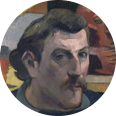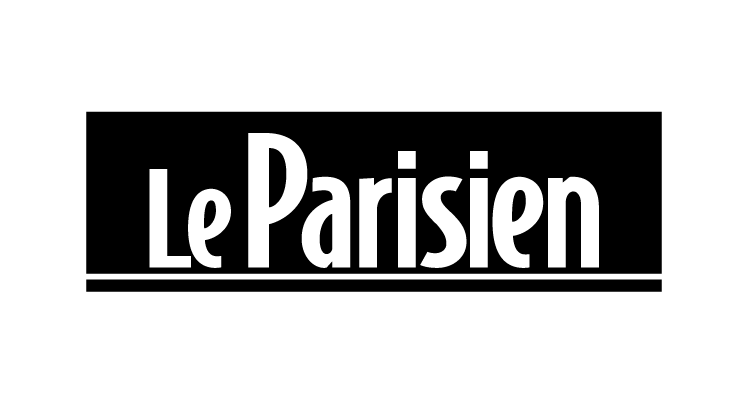Artwork of Paul Gauguin canvas prints & artprints
A painter whose life was chaotic, Paul Gauguin's life was punctuated by his travels, and his style, rooted in post-impressionism, shook up the history of modern art. Between Brittany and Tahiti, Gauguin created colourful paintings whose synthesised style, moving away from the constraints imposed by realism, would inspire many artists after him.
Discover the most beautiful paintings by Paul Gauguin, with "Where do we come from? What are we? Où allons-nous" (1897), a major work from his Polynesian period, "Tahitiennes assises dans un paysage" (1901), a drawing from the journal "Noa Noa" kept by Gauguin during his first visit to the islands, and the oil on canvas "La Belle Angèle", a famous painting from his Pont-Aven School period.
Treat yourself to a reproduction of one of the most important French artists of the late 19th century, with one of the paintings available in the catalogue, and find out more about his biography.
Biography of Paul Gauguin
Paul Gauguin's early life: travelling, far from painting
Born Eugène Henri Paul Gauguin in Paris in 1848 to a mother of Peruvian origin and a father who was a journalist and opposed the regime of Emperor Napoleon III. Fleeing the repression of opponents of the Second Empire, the family set sail for Peru. For the first 7 years of his life, he was fascinated by the local people and the verdant landscapes of this South American country. Back in France, he studied in Orléans, before returning to his love of travel at the age of 17, when he set sail for Brazil as a sailor on a ship. It was on this voyage that he discovered the Polynesian islands of Tahiti, Bora Bora and the Marquesas Islands for the first time. This encounter with nature and its inhabitants left a lasting impression on him. After a brief career in the French navy during his military service, until the end of the Franco-Prussian war of 1870, he returned to France and, with the help of the Arosa family, his mother's relatives, became a stockbroker on the Paris stock exchange. These were prosperous years for the man who was not yet a famous painter of the 19th century. Paul Gauguin lived comfortably and married Mette-Sophie Gad, a woman from the Danish bourgeoisie, with whom he had 5 children.
The discovery of painting: Paul Gauguin's training in Impressionism
It was while working as a broker that Paul Gauguin became friends with his colleague Émile Schuffenecker. Schuffenecker, who was also to become a major French painter of the 19th century and one of the precursors of the post-impressionist artistic movement, introduced Gauguin to painting. Paul Gauguin began to paint and, after meeting Camille Pissarro, he discovered Impressionist paintings. Alongside Pissarro, whom he regarded as a mentor, Gauguin fully immersed himself in the Impressionist style, which at the time had become one of the most fashionable artistic trends in the capital and in French painting in general. Taking advantage of the poor economic climate that was undermining his profession as a stockbroker, Gauguin decided to take up painting completely, in a style derived from Impressionist painting. Unable to support his family with his art, he went to Copenhagen in Denmark, to stay with his wife's parents, before leaving his wife and children behind to return to France, and more specifically to Rouen, to perfect his technique with Camille Pissarro. He then produced his first works, and took part in his first exhibition alongside the Impressionist painters Manet, Paul Cézanne, Edgar Degas, Claude Monet and Pierre Auguste Renoir. It was also during this period that he took up ceramics and took his first steps as a sculptor.
Paul Gauguin and symbolism: development of a more personal style
In 1888, aged 40, he decided to move to Brittany and the village of Pont-Aven. Young painters in the vanguard of the art world had taken up residence in this village with its inspiring landscapes. It was at this point in his life that he met Émile Bernard, a neo-impressionist painter and precursor of the Cloisonnisme movement. Far removed from academic painting, Paul Gauguin and Emile Bernard set about developing a new style of painting that moved away from classic Impressionist pictures: synthesism. Following the example of Japanese prints, the two artists emphasised contours and filled in with large flat areas of simple colour, in order to express the artist's feelings directly. After a trip to Panama and then Martinique, where Gauguin rediscovered the colours and light of the luxuriant nature of these countries, he returned to Pont-Aven and Emile Bernard. Together, they created the Pont-Aven School, which would see a number of French artists and foreign painters pass through its doors. In this painters' studio, the artists concentrated on working with colour and the effects of light and shadow. The rural landscapes of Brittany and the characters inhabiting this small village were a great source of inspiration, as shown by the painting of the innkeeper Angélique Marie Satre, immortalised by Gauguin in his painting "La Belle Angèle" (1889). In 1888, invited by his painter friend Vincent Van Gogh to join him in Arles, Gauguin once again drew on the still-life painting tradition, as well as Impressionism and its colours, while further developing his new pictorial movement around synthetism. The two men were emotionally unstable, and separated after yet another argument, leading to the famous episode of the severed ear, in which Van Gogh ended up mutilating himself.
Paul Gauguin's life in the islands: Tahiti and the Marquesas Islands
In 1891, Paul Gauguin, ruined, wanted to change his life and return to the original nature of his youth. Thanks to the sale of his paintings to collectors, he managed to reach Polynesia and the island of Tahiti. The painter's work became increasingly colourful and luminous, and he changed the way he painted by using more and more of his favourite colours, pink, indigo and lemon yellow, a far cry from traditional academic art. His aim was to free his painting from the demands of realism, in line with the Nabis movement of the late nineteenth century. During this period, he painted his most famous pictures, inspired by his stay in the islands, with nature, animals and, above all, Tahitian women. The latter earned him a mixed reputation in Polynesia, with Gauguin not hesitating to have relationships with young Tahitian girls as young as 15. He also took advantage of this period to try his hand at woodcarving, which he left several traces of. After a brief return to France, to Paris and then Brittany, where he broke his leg in a fight, he returned to Tahiti in 1895 and, in 1901, left Papeete for the Marquesas Islands to rediscover his inspiration. Suffering from poorly treated wounds, he sold his paintings to buy painkillers. Alcoholic, depressed, addicted to drugs and ruined, Paul Gauguin died in 1903, aged 54, in his now famous "Maison du Jouir", with the image of a cursed and controversial artist. Gauguin left behind a plethora of works, which were a major source of inspiration for modern art and contemporary painting, and from the Musée de l'Orangerie to the Musée d'Orsay, among others, numerous retrospectives have been devoted to him to this day, proof of the important influence that the painter's works have had on the arts.
Learn more about the life and the works of Paul Gauguin.

















































































































































